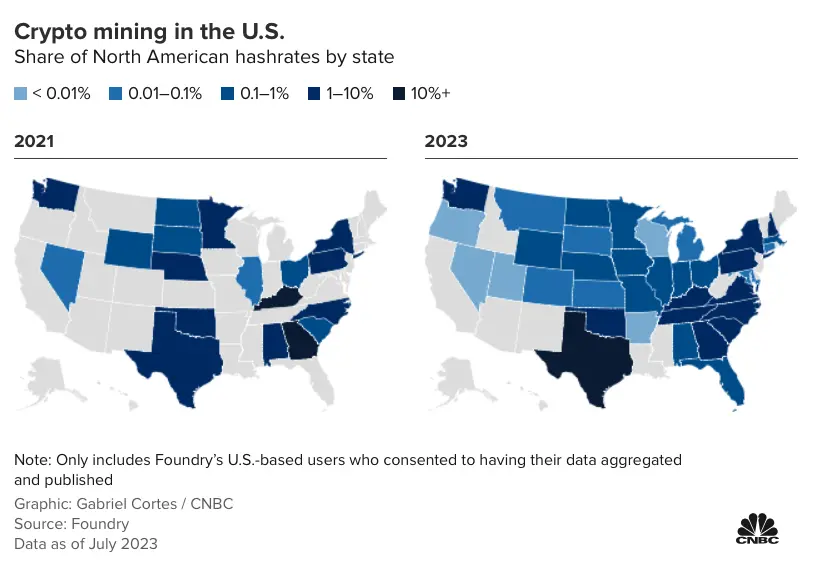- Exclusive data indicates Texas is leading in U.S. bitcoin mining.
- Miners are attracted to Texas due to its supportive crypto stance and energy partnerships.
- Migration has surged from states such as Nebraska, North Carolina, and Oklahoma.
As the next Bitcoin halving looms, miners ramp up operations in Texas, a state becoming the global epicenter for crypto mining.
The Resilience of Kevin Zhang
Crypto winters have posed no threat to seasoned miner, Kevin Zhang. Throughout a decade in Bitcoin mining, from the U.S. to China, Zhang has consistently overcome industry downturns. Leveraging his background, Zhang has remained a dominant figure in the space, scaling operations even during adverse times.
Challenges and Triumphs in Bitcoin Mining
By 2020, the pandemic and halving events threatened miners with reduced rewards and global shutdowns. However, Zhang’s Foundry company capitalized on the situation. Investing heavily in mining led to significant profits when Bitcoin reached almost $70,000 in Nov. 2021.
The Upcoming Halving: Boon or Bane?
With the next halving approaching in 2024, miners face another reward cut. While traders anticipate price spikes, miners face dwindling revenues. This event tests the endurance of mining firms, challenging their survival in the industry. Zhang remains optimistic, especially for those collaborating with strong industry players like Foundry.
Foundry’s Growth Amid Challenges
Rather than dreading the halving, Foundry expands its reach. Ventures into machine sales, deployment, and logistics show their commitment to long-term growth. As China intensified its crackdown on Bitcoin mining in 2021, the U.S. became a refuge, with Foundry taking the lead in these migrations.
Texas: The Global Hub for Bitcoin Mining
As of July 2023, Texas constitutes 28.50% of the U.S. hashrate, reflecting its growing significance in crypto mining. This dominance is attributed to the state’s supportive energy partnerships and favorable regulations. Additionally, data showcases that the entirety of the U.S. has seen a surge in hashrate since 2021.
Impact of Energy Consumption on Mining Locations
Bitcoin mining’s high energy consumption has led to varied reactions from U.S. states. Texas and Wyoming have become favorable spots, while New York legislates against miners. Mining pools, like Foundry, provide insights into the geographical distribution of miners, highlighting the prevalence of mining across different states.
Shifts in Mining Dominance Across States

While Texas rises as a mining powerhouse, other states have seen decreased activity. Georgia’s share plunged from 34.17% to 9.64%. New York experienced a decline due to regulatory constraints. Meanwhile, states like New Hampshire and Pennsylvania are witnessing growth in mining activities.
Current State of Bitcoin Valuation and U.S. Hashrate
Despite falling Bitcoin values since 2021 and increasing regulatory scrutiny, the U.S. hashrate has doubled since the end of 2021. This rise is partly attributed to institutions entering the space. However, JP Morgan’s analysis indicates decreased profitability in mining.
Conclusion
The impending Bitcoin halving presents a pivotal moment for miners, testing their adaptability and resilience. With Texas emerging as a global leader in Bitcoin mining, it reflects the state’s favorable environment and strategic partnerships. As the industry evolves, collaboration, innovation, and adaptability will determine the future success of mining operations.






